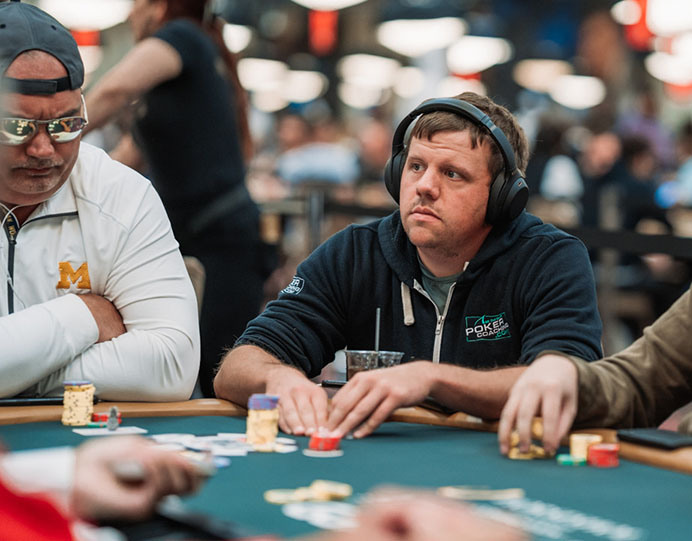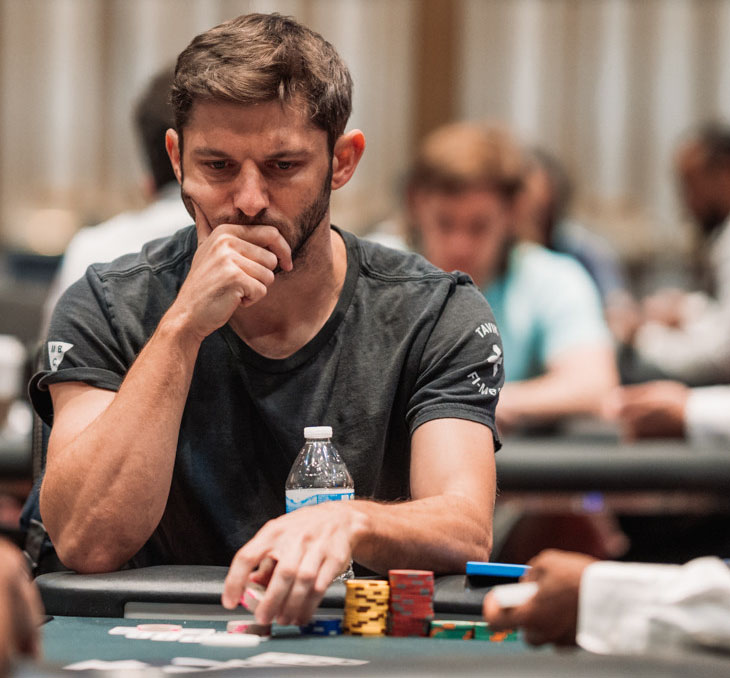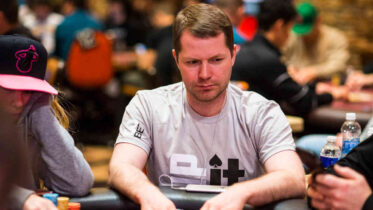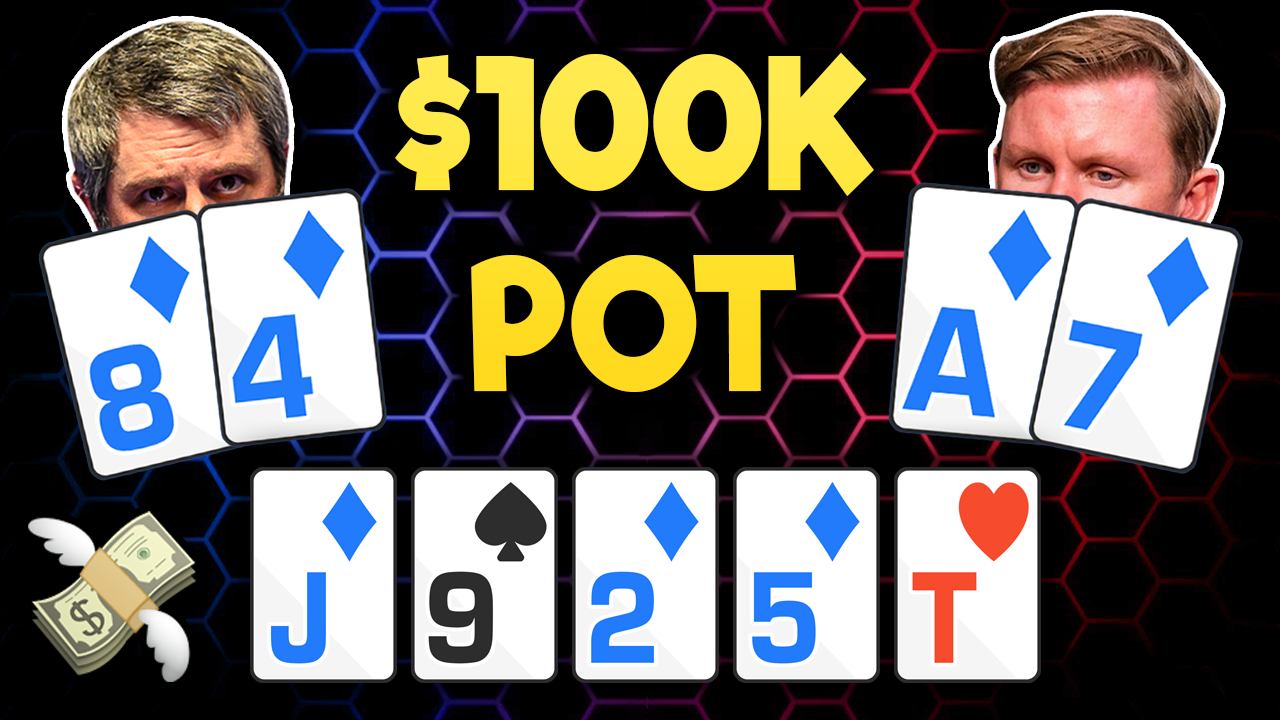The term poker encompasses many different card games, all with some fundamental poker rules, but all of these games and their variations have one thing in common: they are all games based on betting. Whether you play poker live or online, you can’t play it properly without some currency, with poker chips usually playing the part. The entire game is based around betting these chips at different moments in a hand, making it critical to understand the poker betting rules.
If you are not sure when you can bet in poker, how to make your bets, or have any other questions regarding poker betting, you are in the right place.
This guide to poker betting rules will teach you all you need to know about making bets in the game and resolving any dilemmas you may be having.
Forced Bets in Poker – Blinds and Antes
All action at the poker table arises as a result of players trying to win chips that are in the pot. To get things started, every poker game must enforce the first bets. These forced bets are called blinds and antes.
Popular poker games like No Limit Texas Hold’em and Pot Limit Omaha often use both blinds and antes to drive the action.
In these games, two players are forced to post the blinds before the cards are even dealt. The player to the left of the dealer posts the small blind, and the player to their left posts the big blind.
For example, in a $2/5 No Limit Texas Hold’em game, the player to the left of the dealer would post a $2 small blind, and the next player would post a $5 big blind.

With the $7 out there to start the hand, other players would have some incentive to enter the pot, either calling the $5 or making a raise to try and win the money outright.
Ante bets are usually not used in cash games these days but are a regular part of poker tournaments. An ante bet is either paid by every player at the table or by one player paying it for the whole table.
For example, in a poker tournament with blinds at 500/1,000, each player would need to pay a 100 ante, or one player at the table would pay 1,000 chips for the entire table.
Betting Options in Poker
Once the blinds and antes are all posted and cards are dealt, the betting action can start. The first betting round in Texas Hold’em poker starts as soon as players are dealt their hole cards.
The player to the left of the big blind gets the first action in this first betting round (also called preflop), and the action continues around the table clockwise.
The following betting actions are available at different points in a poker hand:
- Fold: A player may choose to discard their hole cards, thus ending their participation in the hand. A player who folds does not need to post any chips and will not be able to win the hand.
- Call: When there is an active bet already in play, each player may choose to match the value of that bet. Calling allows the player to stay in the hand without increasing the current bet.
- Raise: When there is an active bet already in play, each player may choose to raise the value of the existing bet. In no-limit games, the raise can be of any size, up to the size of the player’s stack.
- Check: When there is no active bet in front, each player may choose to check their option, passing the action to the next active player at the table without making any bets.
- Bet: When there is no active bet in front, each player may choose to open the betting. The minimum bet is always the size of one big blind, and in no-limit games, it can go up to the size of the player’s whole stack.
Note that some of the betting actions are only available at specific times. For instance, you can only make a bet if there is no active bet in front of you, while you can only raise if there is one.
Likewise, you will not be able to check your option if a player in front of you has bet, as folding, calling, or raising will be your only options in this scenario.
There are lots of terminology and slang you might hear at the tables might throw you off, but, in the end, many betting poker terms are rooted in the list above.
Poker Betting Structures Explained
The game of poker can be played in many different ways, as there are countless different variations and types of poker.

Some of the more popular poker games include Texas Hold’em, Omaha Hold’em, Seven Card Stud, Five Card Draw, etc.
Regardless of which game you are playing, you will notice one of the three main betting structures will be in play. These betting structures are no limit, pot limit, and limit.
Let’s take a look at what each betting structure means and how it differs from others:
No-Limit Betting in Poker
No-limit poker is by far the most popular poker variant these days, with No Limit Texas Hold’em being the number one game in the world and what most poker strategy and training focuses on.
As the name suggests, no-limit poker is all about betting any amount of chips you want, but the truth is there are some limits in place even in no-limit poker.
For starters, the minimum amount you can bet in a no-limit poker game is one big blind. So, if you are playing $5/10 NLH, you will not be able to bet $5 on the flop unless these are the last $5 you have in front of you.
You can also only bet the amount of chips you have at the table, as the table stakes rule is always enforced in modern poker games.
So, if you have seen cowboys betting more than the other guy can cover and forcing him to fold in the movies, forget about that and focus on actual poker betting rules instead.
Pot-Limit Betting in Poker
Pot–limit betting is most popular these days in the game of Pot Limit Omaha, which is the second most popular poker game, both online and live.
In pot-limit poker games, all betting is limited to the size of the pot. This means you will never be able to bet more than the size of the pot and will not be able to go all-in if that means betting more than the pot. It also means that your pot odds will never exceed 1:1 ratio.
When playing in pot limit games, you will be able to ask the dealer the size of the pot and they will inform you, so don’t worry about accidentally betting more than the pot and getting into trouble.
Limit Betting in Poker
The final betting structure you will find in poker games is limit betting. These days, limit poker is mostly only played in mixed-game tournaments, such as the ones at the World Series of Poker.
In limit poker games, bet sizes are completely limited, and the players cannot decide how much they want to bet at any point.
Instead, bets are made in increments of one small bet in the early betting streets and one big bet in the later streets.
For example, in a $10/20 Limit Hold’em game. You can make a $10 bet preflop and on the flop and a $20 bet on the turn and river.
It is also important to note that a maximum of four raises can be made on every betting street in limit games, with each raise worth one extra bet.
Betting Streets in Texas Hold’em

Texas Hold’em is the most popular poker game out there and the one you are probably looking to master. Therefore, we will explain the different betting streets for this game.
Note that the same betting streets and order are also used in games like Pot Limit Omaha and Short Deck Poker, so learning about these will be useful in other forms of poker as well.
Let’s start at the very beginning.
First Betting Round – Preflop
The first betting round in Texas Hold’em poker starts after the hole cards are dealt. With the two blinds posted, the player to the left of the big blind gets the first action.
During preflop play, all players must at least match the value of the big blind or fold their cards. Alternatively, they can raise the bet.
Betting options like check and bet are unavailable in this betting round, as the big blind represents an active bet.
The action goes around the table in a clockwise manner, with each player given the opportunity to fold, call, raise, or re-raise with a 3-bet and beyond.
Second Betting Round – Flop
Once all preflop betting is completed, the dealer puts out the first three community cards, called the flop.
As soon as these cards are dealt, flop betting can begin. The player who posted the small blind before the flop is first to act on the flop, while the player holding the dealer button is last to act, provided they still have their hole cards.
The flop betting round is the first that allows players to check if they prefer not to bet. However, once one player makes a bet, others will have to at least match it or fold their cards.
Third Betting Round – Turn
Once flop betting is completed, the dealer will deal the fourth community card, called the turn. Action on the turn starts with the small blind, the same as on the flop.
All players are given the same betting options they were given on the flop, which means they can choose to check or bet to start with and will need to cover any bets made by other players in order to stay in the hand.
Fourth Betting Round – River
Once turn betting is completed, the dealer will put out the final community card, called the river. The river completes the board of five cards, and the final betting round ensues.
The action flows in the same order on the river as it did on the flop and the turn, and players once again have the same options.
Once all river betting is completed, the dealer will announce a showdown if there is more than one player still active in the hand. Players are then asked to turn over their cards so that the winner can be determined.
Betting with a Reason

Now that you know all about the different betting structures and the order of betting across different rounds of play, the last thing to consider is why you should bet.
Novice poker players often bet for no particular reason, simply because they are forced to choose between checking and betting.
Instead of betting randomly, you should always know why you are betting, and you should make bets of different sizes depending on the situation and informed by an understanding of GTO poker principles.
Typically speaking, you will want to bet for one of the following reasons:
- For value
- As a bluff
- To protect your equity
Betting for value means betting with a hand you believe is likely to be best at the moment. For instance, on a board of As9d6h, you will want to bet with your AcAh because it is definitely the best hand, and you want to get paid.
When value betting in poker, you should consider the possible hands your opponents could have and the likelihood that those hands will call your bet.
If you believe your opponents are not likely to continue against your value bet, you may be better off checking and allowing them to potentially bluff you.
Betting as a bluff means betting with a hand you are sure is not the best. However, you believe a bet might allow you to take the pot down regardless of your hand strength.
When bluffing in poker, make sure to pick hands that have the potential to improve if called instead of hands that have no connection with the board.
For example, on a board of Jh9h6s, make bluff bets with hands like AhTh or 8s7s instead of hands like 5d4d or Ac3c.
Finally, when you have a hand that rates to be best but can be vulnerable on later streets, it might be the right time to make a bet.
For instance, on a board of 6s5c2d, your 8d8c rates to be the best. However, you want to make hands like QJ or KQ fold to a bet now instead of playing the guessing game when an overcard hits the turn and potentially improves your opponents.
Of course, there is a lot more to be said for betting in poker, but adopting the simple advice we gave you in this guide will get you one step closer to unveiling all the poker betting secrets you need to know.




